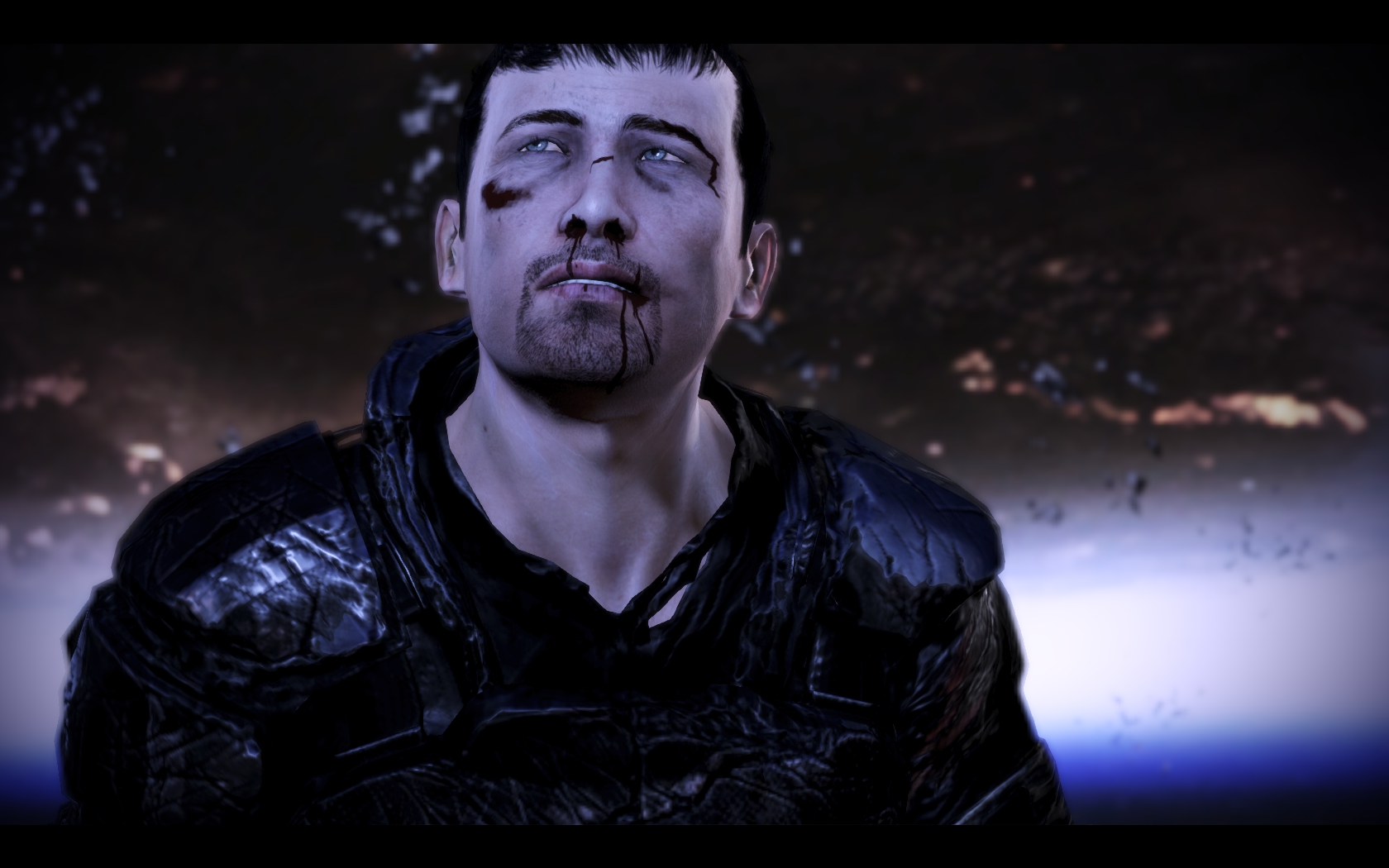Given the current gloomy state of the global economy, this week seems like as good as any in which to grumble. Without further ado, I therefore present five of the most irritating things to be found in games. I warn you, this article features capital letters.
1. Lack of pause or fast quit
Admittedly this one didn’t used to be much of an issue for me back when I was a strapping young lad with nary a care in the world. These days, with the multi-pronged attack of day job, house-keeping, book-writing, pub-going and girlfriend-placating, time is in considerably shorter supply and, as such, it’s important to be able to carefully pick and choose when to indulge in some light entertainment.
Movies understand this – you can pause a DVD, stop it, fast-forward and rewind at will. Same with music. Television has at last also gone that route thanks to TiVo/Sky+/etc and the various On Demand services. A book you can pick up and put down whenever you like (unless it’s particularly good).
Games, alas, continue to make things as difficult as possible for people on tight schedules. No game should be shipped without a quick and easy pause function. Similarly, you should be able to save your progress and quit the game in under 30 seconds. And yet many games, primarily single player, story-based titles, overlook these basic design principles. Take the PC version of Assassin’s Creed with it’s absurd 11-step quit procedure. Or Shadow of the Colossus, which features extremely length (and beautiful) cut-scenes at its beginning and end but entirely without the ability to pause – this proved particularly awkward when I completed the game somewhat unexpectedly just before dinner. What was supposed to be a quick 10 minute bit of pre-food gaming turned into half an hour of nervous finger-tapping, while I wondered just how long the outro would last. Even the otherwise near-perfect Darwinia suffers from an odd design quirk in which hitting escape to display the options menu fails to pause the game. Not good if the phone’s ringing.
2. Unnecessary fade to blacks
In their continuing struggle to define a ‘language’ for video games, games developers have tried all kinds of visual techniques, usually taking inspiration from the language of cinema. Something clearly got lost in translation when it comes to fading to black (and vice versa).
A fade to black in cinematic lingo is generally shorthand for “some time passes.” It’s most frequently used for dramatic effect, ending a particularly powerful or important scene. It’s also common to fade in and fade out at the very beginning and very end of a film. What you don’t do is fade in and out at the beginning and end of every single goddamn scene.
Unfortunately many developers seem to think it necessary to fade to black and then fade back in when moving from in-game visuals to a cut-scene. Presumably they’re concerned that players won’t realise that something has changed, despite the fact they suddenly can no longer control the player character. This is a terrible, terrible thing. It disrupts the narrative, confuses the viewer and generally breaks immersion.
Particularly guilty of this are role-playing games, the most recent example being The Witcher, which often fades in and out even in the middle of a continuing cut-scene! In a game that is otherwise narratively very strong it’s a huge irritation.
Developers: STOP FADING TO BLACK. If you secretly want to be movie directors, at least read up on how to do it properly.
3. Poor save options
In addition to the aforementioned pause and quit issue, the ability to save in a sensible manner is also absolutely crucial to the success of any game. Checkpoints strung out at 30-minute intervals are not good enough, especially if they don’t even count as proper save points between play sessions and if you encounter multiple challenging boss enemies in-between. Yes, I’m looking at you, God of War. Forcing a player to start from the beginning of a level when they die or start a new session is not acceptable. Having to repeat a huge chunk of gameplay that you already know how to do simply so you can get back to the one randomly difficult bit IS NOT FUN.
There are two options, and only two, that are truly acceptable.
- Allow the player to save his game whenever he likes, as many times as he likes, using as many save game slots as he likes. Also include a quicksave/quickload system. This way you let the player control his own playing time.
- Have an automatic checkpoint saving system, but one in which the checkpoints are intelligently spaced so as to ensure the player does not have to retrace half the game in the unfortunate event of his death. The only game I’ve ever really known to do this effectively is Call of Duty 4.
4. Random difficulty spikes
A game should not suddenly become impossibly difficult. It should either remain at a constant level of challenge throughout, or it should escalate in a smooth fashion, educating the player along the way so that their skills increase at the same (or similar) pace as the difficulty.
Portal, for example, starts off with extremely simple puzzles that introduce you to the basic concept of teleportation. By the end of the game you’re spinning off walls, tumbling through space and using momentum to fly through multiple portals without even hitting the ground. If the game had asked you to do that on level 2, most people would have stopped playing. Instead, the game gradually and subtly cranks up the difficulty, while ensuring that you always have the information required to complete the task.
Compare that to, say, Final Fantasy X. It is a game I have never actually finished due to an utterly absurd difficulty spike that suddenly hit while up a snowy mountain, at a point which I suspect is actually rather close to the climax. A battle with a particularly tough enemy proved insurmountable, despite my coping easily with every single previous encounter in the game. After some frantic Internet research I discovered that none of my party of heroes had the required skills to defeat the bad guy, due to the manner in which I had upgraded their stats over the course of many, many hours of gameplay. This is extremely bad game design – sure, you could argue that I simply wasn’t playing the game properly, or that I didn’t understand the character upgrade system, but the point remains that I still completed 90% of the game before this became an issue.
If the FFX had pointed out to me after an hour or two of play that I simply “wasn’t getting it”, then I wouldn’t have minded. But to let me get 15 hours into a game before pulling the rug out is just snide.
Also see: the final Dahaka battle in Prince of Persia: The Warrior Within.
5. Changing aspect ratios
Bit of a geeky one, this. If you thought I was taking the whole fade to black thing a little too seriously up above, you ain’t seen nothing yet.
What are aspect ratios? Well, in this context they’re the shape of the image you see on your television or computer monitor. Old TVs have an aspect ratio of 4:3, which means they’re almost square. Newer, widescreen televisions have an aspect ratio of 16:9, which makes them much wider than they are tall. Films can be made in a huge variety of aspect ratios, which is why watching an epic like Star Wars on a 16:9 widescreen television will still result in letterboxed black bars at the top and bottom: it’s because Star Wars is even wider than your widescreen telly.
And then we have games. Back in the day all games were 4:3, because all monitors and all televisions were 4:3. Then widescreen came along and gave us 16:10 monitors and 16:9 televisions. This shouldn’t be a problem for games, though – unlike movies and television programmes, game visuals are generated ‘on the fly’, so can in theory be whatever shape and size you want. That’s how on a PC you can change the resolution a game uses. There’s a whole other heated debate about how games should handle widescreen, but I’ll leave that for another time.
What actually bothers me is that some games can never make up their damn mind. It’s like the developers wanted to try out every single aspect ratio and then never quite decided which one to go for. The biggest culprit of this is Bioshock, which flicks between so many different aspect ratios and presentation styles that I almost suspect it’s some kind of post-modern computer game parody that I’ve not picked up upon.
Click on the banner image just above to see what I mean. Within the first half hour of playing the game you’re given three entirely different aspect ratios. Top-left we have the opening intro movie, which appears to be in standard 16:9, presumably because it’s a pre-rendered video that would have been designed for full widescreen playback on Xbox 360s. Top-right we have the opening descent into the underwater city of Rapture, which is a cut-scene but is presented in-engine with the player still controlling the direction the camera is pointing. Bottom-left we have a standard in-game shot which is using a 16:10 aspect ratio to fit my PC screen. At the bottom-right things get particularly crazy when we suddenly launch into another cut-scene, also fully in-engine but bizarrely featuring massive black letterboxing at the top and bottom – even though it’s already being viewed on a widescreen monitor.
Developers: Switching aspect ratios continually and for no reason is jarring and unprofessional. Choose one and stick with it throughout.









0 Comments
scrag_10 · October 19, 2008 at 1:08 am
6. random difficulty spikes and poor save options, COMBO.
Thee worst offender I have played is Final Fantasy III (DS). The save option is you can not save in dungeons only on the world map. It took me at least 10 tries to get the final dungeon down, and then I finally made it, but was out of supplies and needed to go get some, turns out you can’t leave the final area, and when I tried it turned out I went right to the final boss and died. And It forced me to level up. I am the kind of gamer who prefers a hard boss, and long epic battles, beating the game in minimum hours, collecting all items, and NOT leveling up to make the game easy (thats cheating), but it was the only way. I finally did it with my new more powerful guys, but all random battles were to easy now, and just a formality, the final boss of course ridiculously hard. So every time you want to fight the final boss you have to spend 1/2 an hour running through a dungeon.
So why did they use that save system?
Because in final fantasy II (and many other games), if you save in dungeons without supplies, you can not get out of the dungeon, and you need to restart the game. FF3 has quick save for in dungeons, but you still need to redo the dungeon, from your last world save if you die.
The only RPG I have played to get it right is Golden Sun.
There is also the opposite of being to hard, to easy :(; like the final guy in Prince of Persia sands of time.
Kate Morris · October 26, 2008 at 11:58 pm
Completely agreed with you both on the Final Fantasy series. It’s almost a given that you have to level up at the beginning of every FF game just to beat the bosses later on. So you get to the point where you’re going, “Not another battle…” because they’ve become so easy. Yet the bosses are enormously challenging and are unable to be defeated unless you’ve read up on how to beat them or you’ve tried to beat them so many times that you’ve finally mastered the perfect way (or you’ve realized that you were supposed to get some sort of weapon or ability three dungeons ago). It’s just like a bad addiction.
Annoying things in games: Part 2 « Potential Gamer · November 28, 2008 at 6:05 pm
[…] In an attempt to inject some variety into this website and slightly dilute the over-excited Left 4 Dead coverage, here’s another round-up of game design grumbles. In case you missed my initial selection, you can find them here. […]